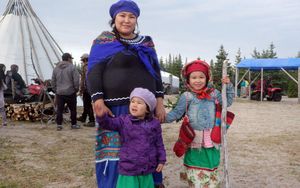The integration of remote sensing techniques with field data has revolutionized geological mapping, especially within the complex terrains of Egypt's Eastern Desert. Recent research focusing on the Wadi Um Laseifa area showcases how advanced satellite technologies can illuminate the enigmatic geological history embedded within Neoproterozoic rock formations.
Located approximately 50 kilometers south of Quseir city, Wadi Um Laseifa is characterized by diverse rock units comprising ophiolitic mélange, island arc assemblages, and granitic intrusions. The study employs multisource remote sensing data, including Sentinel-2, PlanetScope, and the hyperspectral PRISMA satellite, to analyze both structural characteristics and lithological composition across various scales.
Dr. Mohamed El Hehiby, the lead author of the study, states, “The multisource remote sensing analysis illustrated the efficacy of the employed methodology in conducting thorough geological analyses.” This comprehensive study highlights the fusion of satellite data with field observations, enabling more precise geological mapping capabilities.
Traditional geological mapping primarily involves ground-based observations which can often overlook the broader structural phenomena. Remote sensing introduces the advantage of comprehensive spatial coverage and data collection across rugged terrains. The researchers implemented image-processing techniques, such as false color composite (FCC) and Minimum Noise Fraction (MNF), enhancing the discrimination of various lithological features.
By utilizing various remote sensing platforms, including high-resolution imagery, the team successfully delineated distinct rock units, including serpentinites, meta-pyroxenites, metagabbro, and more, previously obscured within complex geological settings. This advancement contributes significantly to unraveling the geological heritage of the Arabian Nubian Shield.
The study revealed three ductile deformation phases—D1, D2, and D3—each characterized by distinct structural features encompassing folds and faults. The first phase, D1, is identified by isoclinal folds, whereas the subsequent phases exhibit increasingly complex folding patterns and related structural features. Notably, the research indicates substantial variations compared to earlier interpretations by previous studies, reflecting both the region’s tumultuous geological history and the effects of extensive tectonic processes.
El Hehiby emphasizes the importance of these insights: “Our study highlights the importance of integrating remote sensing data with field observations to achieve accurate geological maps.” The coupling of these methodologies supports not only enhanced accuracy but opens persistent debates surrounding the classifications of geological structures within the Wadi Um Laseifa area.
Field observations corroborated remote sensing findings, confirming the presence of varying rock types and lithological contacts. Notably, the research identified the first occurrences of metapyroxenites and chert blocks within the region, marking significant contributions to local geology. High-resolution satellite data also unveiled the geographical distribution of normal and strike-slip faults, key elements for comprehending tectonic dynamics.
This work lays foundational knowledge for future geological research and resource exploration. The authors assert, “By employing advanced remote sensing technologies, this study has set the groundwork for future research endeavors within arid environments.”
The study not only illuminates the geological intricacies of the Um Laseifa ophiolites but also serves as a key reference for similar geological challenges across other arid regions. Comprehensive geological maps and interpretations will assist experts and scholars alike, as they navigate through the layered histories of geological formations shaped by intense tectonic forces.
Overall, this multidisciplinary approach not only resolves longstanding geological debates but also offers significant potential for future geological exploration and resource assessment within the Eastern Desert of Egypt and beyond.



